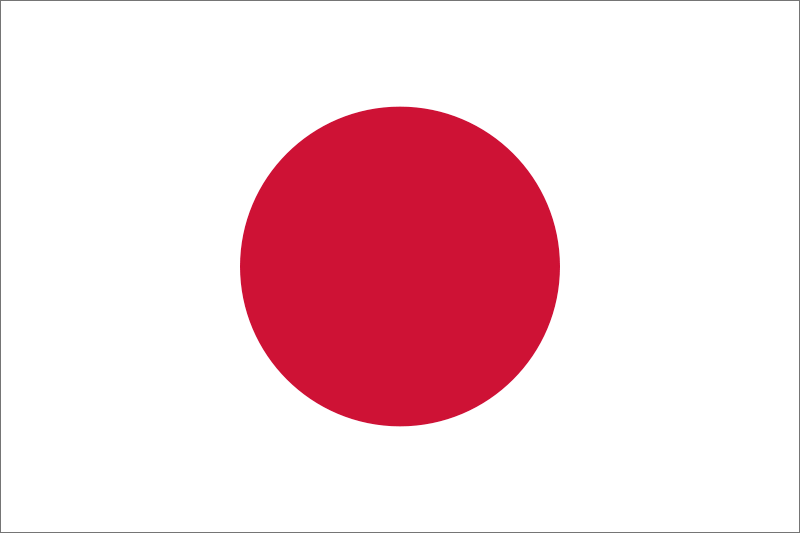The japanese tradition
Data: 2.03.2018 / Rating: 4.7 / Views: 612Gallery of Video:
Gallery of Images:
The japanese tradition
The Teravada tradition emphasizes monastic communities. it has developed many differences and aspects which are indigenous to Japan. Japanese popular culture encompasses the modern popular culture of Japan. It includes Japanese cinema, cuisine, television programs, anime, manga and music, all of which retain older artistic and literary. Of The Strangest Aspects Of Japans Sex Culture. David Tormsen September 6, 2015. The Japanese are often assumed to be sexually repressed. Given the low birthrates and increasing numbers choosing to forgo romance in favor of a single lifestyle, this is partially true. Japanese Family Traditions Like people of any other society, Japanese also follow a specific code of etiquettes, which rules the social behavior of the people. In effect, it is mandatory for every individual to conform to the customs and traditions and to follow them without fail. Japanese culture is deeply rooted in their values and they play a critical role in everyday life. Here are some of the elements that are essential Japanese values: Age: Filial pietyrespect and care for ones eldersis an important factor for the Japanese. They have a great deal of respect for their elders and value. Resources of Japanese customs and traditions including bowing, giftgiving, table manners, shoes, miscellaneous tips and Japanese names for anyone travelling in Japan. Due to the Japanese tradition of having two opposite standards for everything, Osaka is stand right pass left. In the Japanese tradition of kintsugi, broken things are repaired with gold (or silver) joinery, so that the repaired object is even lovelier than the original and the breakage and repair becomes an important part of the object's history, rather than something to disguise. The idea that adversity could make something (or someone) more. Learn about the many unique Japanese eating customs, including Japanese tipping customs, pouring drinks in Japan, and how to use chopsticks. edu is a platform for academics to share research papers. Another tradition observed is a folk dance called Bon Odori. The styles of dance vary from area to area but usually, Japanese taiko drums keep the rhythms. Bon odori is typically held at parks, gardens, shrines, or temples, wearing yukata (summer kimono) where dancers perform around a yagura stage. Sources of Japanese Tradition is a bestselling classic, unrivaled for its wide selection of source readings on history, society, politics, education, philosophy, and religion in the Land of the Rising Sun. For those interested in Japanese history, samurai culture and the role this military class played in shaping Japan is a fascinating one. Although The Japanese tea ceremony, also called the Way of Tea, is a Japanese cultural activity involving the ceremonial preparation and presentation of matcha (), powdered green tea. After the death of Riky, essentially three schools descended from him to continue the tradition. Japanese Painting: Japan has a long tradition of painting and woodblock printing. Some of the famous Japanese painters are Utagawa Hiroshige ( ) who is famous for the Ukiyoe or woodblock printing style of art. Sources of Japanese Tradition has 126 ratings and 9 reviews. umberto said: This book didnt interest me at first sight, however, I decided to read it bit A humorous look on the culture of Sushi Japanese tradition celebrates both of these ideas in the form of a kanreki, or sixtieth birthday. The kanreki tradition stretches back to Japans adoption of the Chinese zodiac calendar and includes its own particular vestments for the occasion. Let's take a look at how Japanese parents practice these traditional rituals to show their love. Japan indepth; 10 Japanese traditional rituals to give every child a happy life; 10 Japanese traditional rituals to give every child a happy life. Author Y Yoririn Feb 17 2015 about the author Y Yoririn Related articles Book your Hotel. the japanese tradition namikibashi Japanese religion is also a private, family affair. It is separate from the state; there are no religious prayers or symbols in a school graduation ceremony, for example. Consequently Shinto principles can be seen throughout Japanese culture, where nature and the turning of the seasons are cherished. In a tradition stretching back. Japanese Culture and Tradition December 11, 2017 Japan, pronounced in Japanese as Nippon or Nihon, is a Pacific Ocean island nation off the coast of mainland Asia. The master of Japans ancient tattoo tradition Tattoo master Horiyoshi III has spent his life using irezumi to keep alive Japans cryptic culture of dragons, street knights and samurai. Japanese origami craftsmen prefer to create likenesses of natural objects, such as flora and fauna, as opposed to nonliving objects, which are more popular in other paperfolding cultures. Nowadays, contemporary artists who are inspired by Japans uniquely rich aesthetic tradition are able to construct extraordinary origami that is both. Theodore de Bary, Carol Gluck, and Arthur Tiedemann. Sources of Japanese Tradition is a bestselling classic, unrivaled for its wide selection of source readings on history, society, politics, education, philosophy, and religion in the Land of the Risin In the case of Japan, both China and Korea had heavy influences on the traditional colors of Japan early on in history through religious and political ideas. However, in the Meiji era many new colors were adopted in Japan as chemical dyes were introduced through trade with Western countries. Traditional Japanese reds were made from natural. Japanese Culture Culture of Japan Japanese culture including traditional culture like Geisha, Samurai, Japanese tea ceremony, Japanese gardens, kimonos and Japanese Language. Plus modern culture such as modern Japanese fashion. The History and Culture of Japanese Geisha A long standing stigma has been placed on Japanese Geisha girls. When someone thinks of a Geisha, they think of a glorified prostitute or call girl. Geishas are entertainers, and they are trained vigorously in art, music and dancing. If you translate Geisha into English. Ukai, an ancient Japanese fishing method that uses birds to catch fish, has been around for 1, 300 years. While the practice has become a popular tourist attraction, it has also invited controversy. Japanese tattoos have a tradition that has been followed for quite a long time with many nonJapanese adopting the Japanese tattoo culture. According to the Japanese, each tattoo worn has its meaning and purpose and is often viewed as a means to demonstrate societal status. The thing about Japanese Tattoos is they are both clandestine and open [ Japanese art: The tea ceremony Perhaps the most calculatedly effective aesthetic development of the Muromachi period was the emergence of the cult of tea. The environment gradually required for tea gatherings grew into a kind of ritualized theatre in which objects removed from. Sources of Japanese Tradition is a bestselling classic, unrivaled for its wide selection of source readings on history, society, politics, education, philosophy, and religion in the Land of the Rising Sun. Bizarre Aspects of Japanese Culture. No other country in the world has experienced such a confluence of tradition, technology, and circumstance. Feudal samurai ideals clash with cutting edge computers; aged. Discover more about the Japanese Obon, a Buddhist Tradition Honoring The Ancestors' Spirits in midAugust. The dead are said to come visit the livings The Japanese culture is a multilayered and complex system that has been developing within itself and forming new layers for thousands of years. When Westerners think of Japanese culture, perhaps one of the first images that spring to mind is one of an ancient Samurai warrior wielding his heavy. Another unique situation that established many traditions in its wake was the emphasis on the household. Many of todays most prominent and visible traditions The practice of Japanese Archery, called Kyudo, can be traced back to 2 different origins: ceremonial archery connected to Shinto and combatant archery associated with warfare and hunting. Kyudo is thought to have been the earliest martial art of Japan, as. Japanese Traditions and Family Life Family Life Many families have Buddhist altars for deceased relatives When children are born the families believe their children. 10 customs you must know before a trip to Japan. Many Japanese will insist on using their own English language ability, however limited, to converse with foreigners, in spite of the fact that the person on the opposing end may have more knowledge of the local tongue. The traditional Japanese ceremony is a Shinto ceremony, though many Japanese in America celebrate weddings with a Buddhist ceremony. Regardless of religious rituals, most Japanese also include a cultural sakesharing tradition at the wedding. Sources of Japanese Tradition is a bestselling classic, unrivaled for its wide selection of source readings on history, society, politics, education, philosophy, and religion in the Land of the Rising Sun. Last splash: Immodest Japanese tradition of mixed bathing may be on the verge of extinction by James Hadfield. The Japanese tradition of floating lanterns in rivers, 30 Interesting Japanese Traditions (part 2) A list of popular Japanese traditions. Ama are free divers who collect pearls, shellfish, lobsters, octopus, sea urchins, oysters and seaweed. Blood Types In Japanese Culture. He has written extensively on Confucianism in East Asia, and was general editor of the first editions of Sources of Chinese Tradition, Sources of Indian Tradition, Sources of Japanese Tradition, and Sources of Korean Tradition. Carol Gluck is the George Sansom Professor of History at Columbia University. Learn Japanese 2, 465 likes 3 talking about this. We are providing Japanese content for foreigners learning in Japanese. For Japanese culture and traditions are incredibly unique, making it a dream destination for a lot of travelers. That said, the fact is that Japan can be an intimidating country for firsttime visitors, but with a few etiquette tips about respectfulness and manners you will feel more comfortable. Theodore de Bary, Carol Gluck, and Arthur Tiedemann. Since it was first published more than forty years ago, Sources of Japanese Tradition, Volume 2, has been considered the authoritative sourcebook for readers and scholars interested in Japan from the August 6, 2018 This is an ancient Japanese tradition called Ukai, or cormorant fishing. The bird keeper ties a loose snare around the cormorants neck. They then send the birds out on leashes. The Japanese Tea Ceremony is a cultural tradition that originated in China. The tea was considered medicine that promoted physical and spiritual health and was consumed for
Related Images:
- Le coeur des hommes
- Suits web dl s02e01
- Jenni lee s
- 1 Happy Gilmore 1996
- Superior spider man 3
- Theme for windows 8
- Ce roger someday
- Machine learning for hackers
- Captain america the winter soldier 2014 smy
- 7aum arivu xvid
- Chris brown x deluxe itunes edition
- Blackadders christmas carol
- When the husband is away the wife will play
- Seal team six movie
- Mp3 nature sounds
- Agents of SHIELD dvd
- Lego ninjago s02
- Superman super villains brainiac 2013
- A teacher yify
- Discografia bob marley
- Omar salma 3
- The Godfather II RELOADED torrent
- Ill fly with you
- Blue dark season 1
- Holmes and moriarity
- Giant boulder of death
- White teens in the hood
- Kingdom of heaven englis
- The harry potter 1 hindi
- Start trek tos
- Victoria webb 18
- Windows 7 mini
- Resident evil 5 retribution 3d
- Big momma 3li
- Zach stone s01e05
- Cirque du freak
- Dimitri vegas like mike va
- French dvdrip ac3
- How to loose a guy in 10 days
- S01e06 hdtv xvid 2hd
- Hard to hold on to
- Fury 720p bluray
- The simpson season 2
- Carrie underwood miranda lambert
- Backroom casting molly
- Ncis s09e08 720p
- Coming to America
- Bee gees in concert
- All new x men hc
- I am 2011
- Novo 3 apk
- Yamla pagla deewana dvdrip
- Torrent
- Website 5 multi
- Monuments Men ita
- Fantastici 4 surfer
- License avast 2050
- Resident evil afterlife
- Rush fr sub
- Philippe claudel nl
- Krystal steal show
- Blair witch project 2000
- Hitlist week 2014
- Django reinhardt 1947
- Autocad 2014 software
- Background to danger
- 100 Hits Halloween
- Akame ga kill 18 720
- Tetangasespanolas aletta ocean
- Regular show s04
- Killem all flac
- Taxi 3 extreme rush












